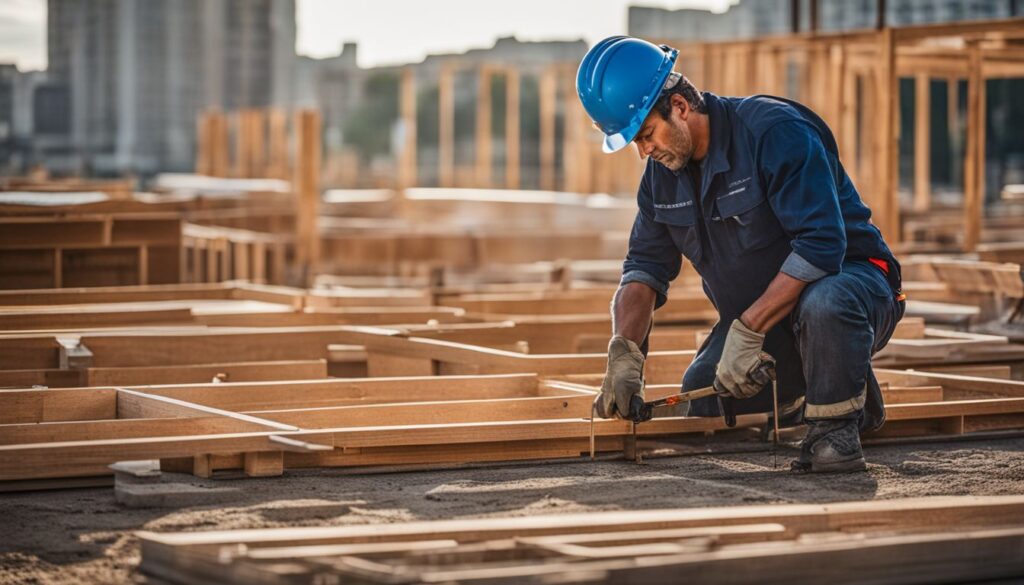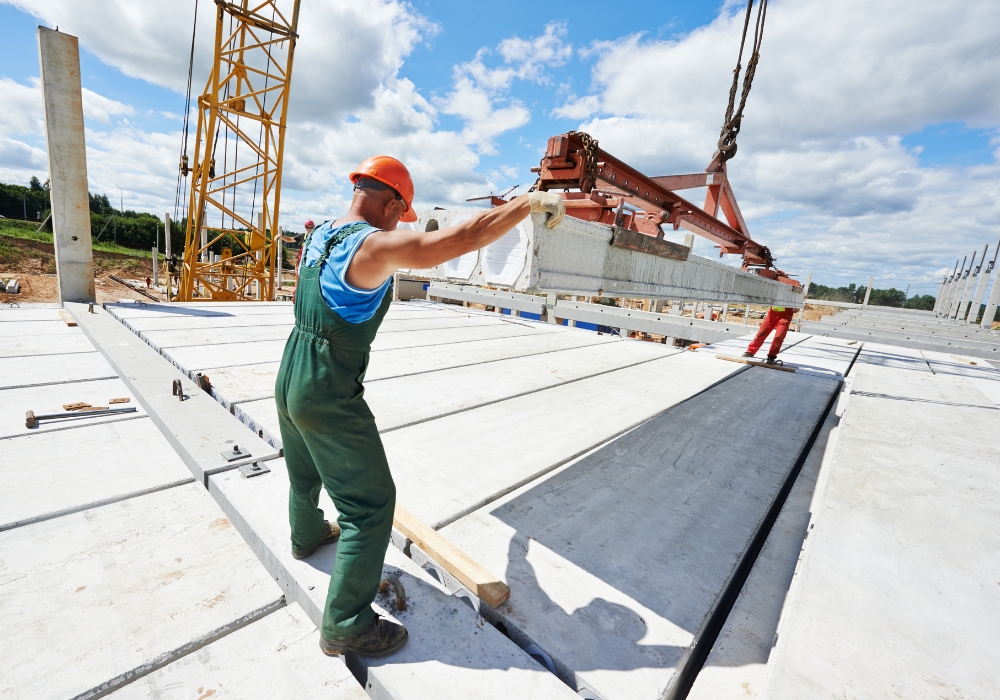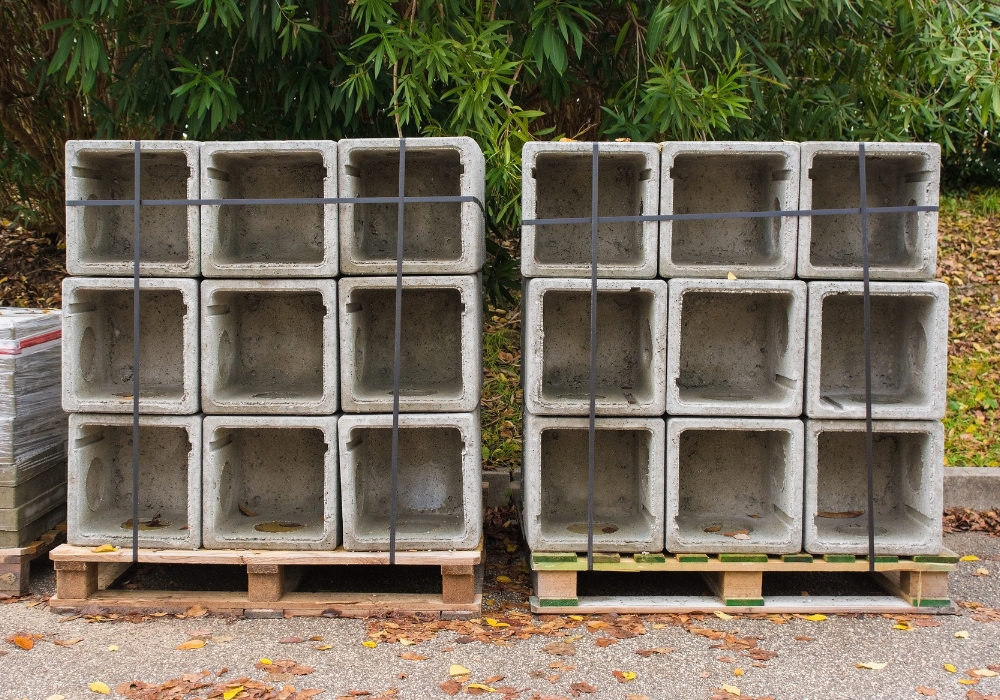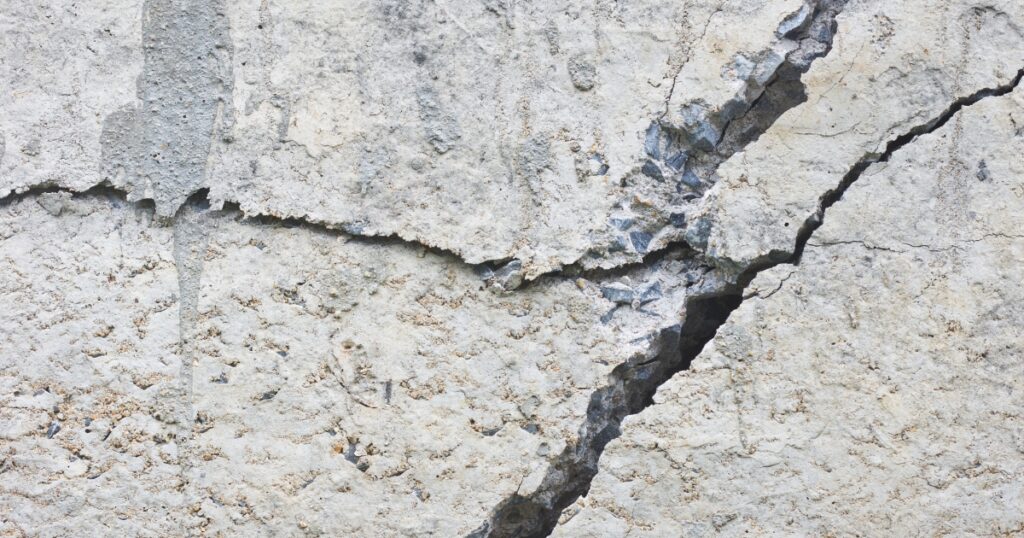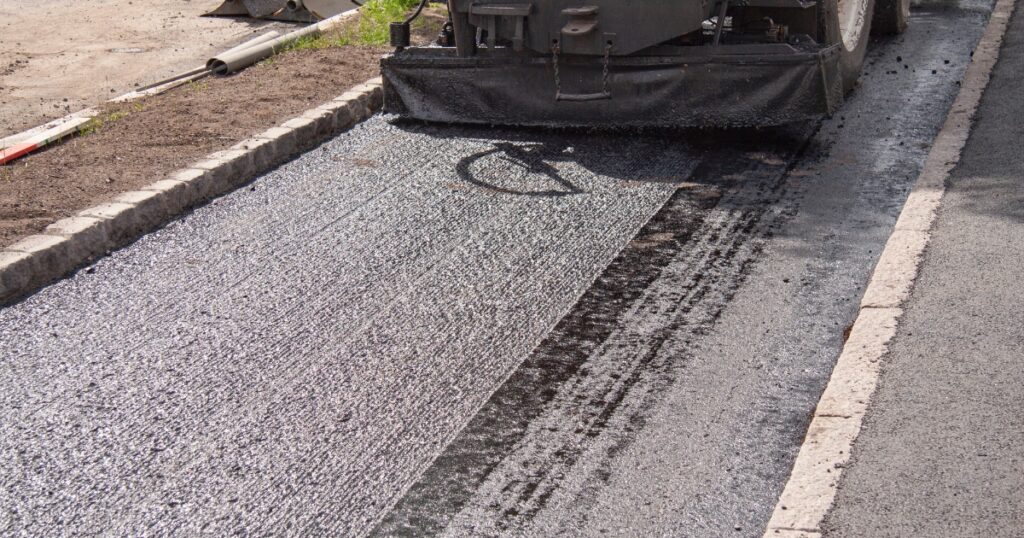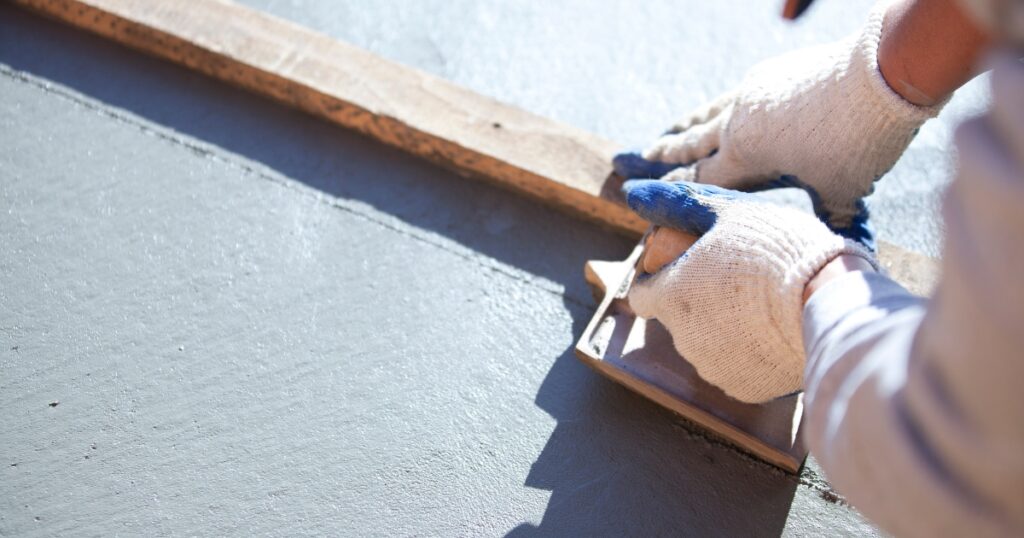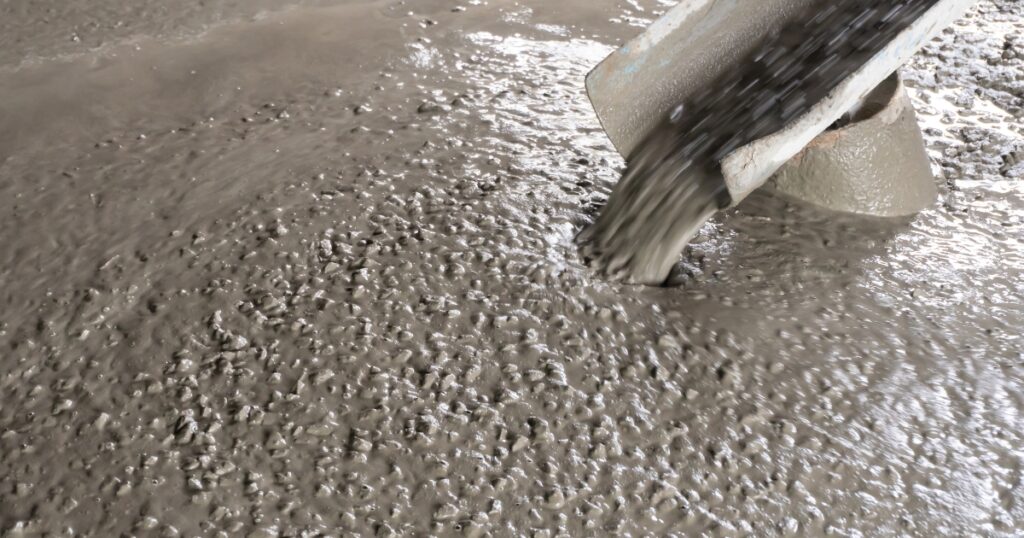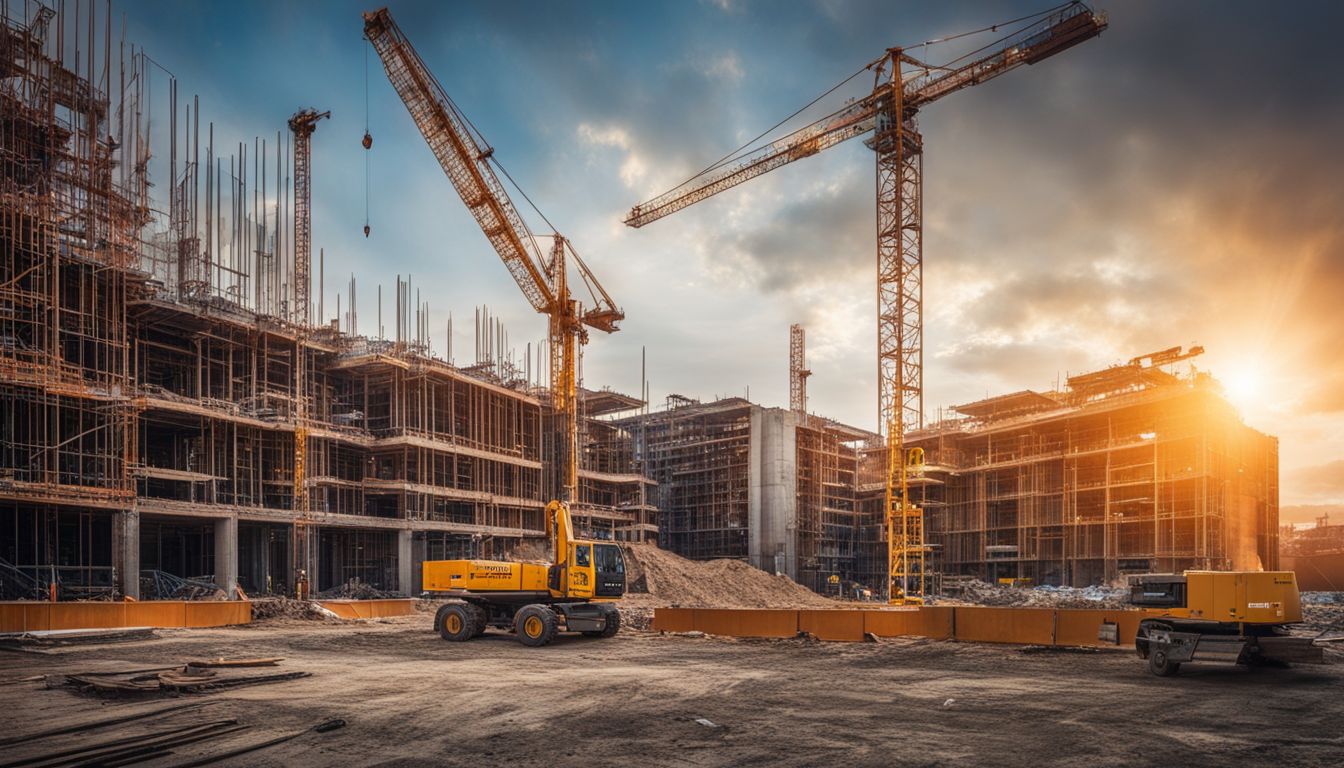
Navigating the quest for sturdy and cost-effective construction techniques can be a bit of a headache, right? We know the struggle all too well —trying to figure out how to make our projects stand the test of time without blowing the budget.
But here’s a bit of a revelation: getting innovative with formwork is pretty much the silver bullet we’ve been looking for. This yarn will give you the lowdown on the latest and greatest in formwork technology that’s set to revolutionise not just durability but efficiency in construction too.
Stick around!
Understanding Formwork in Construction
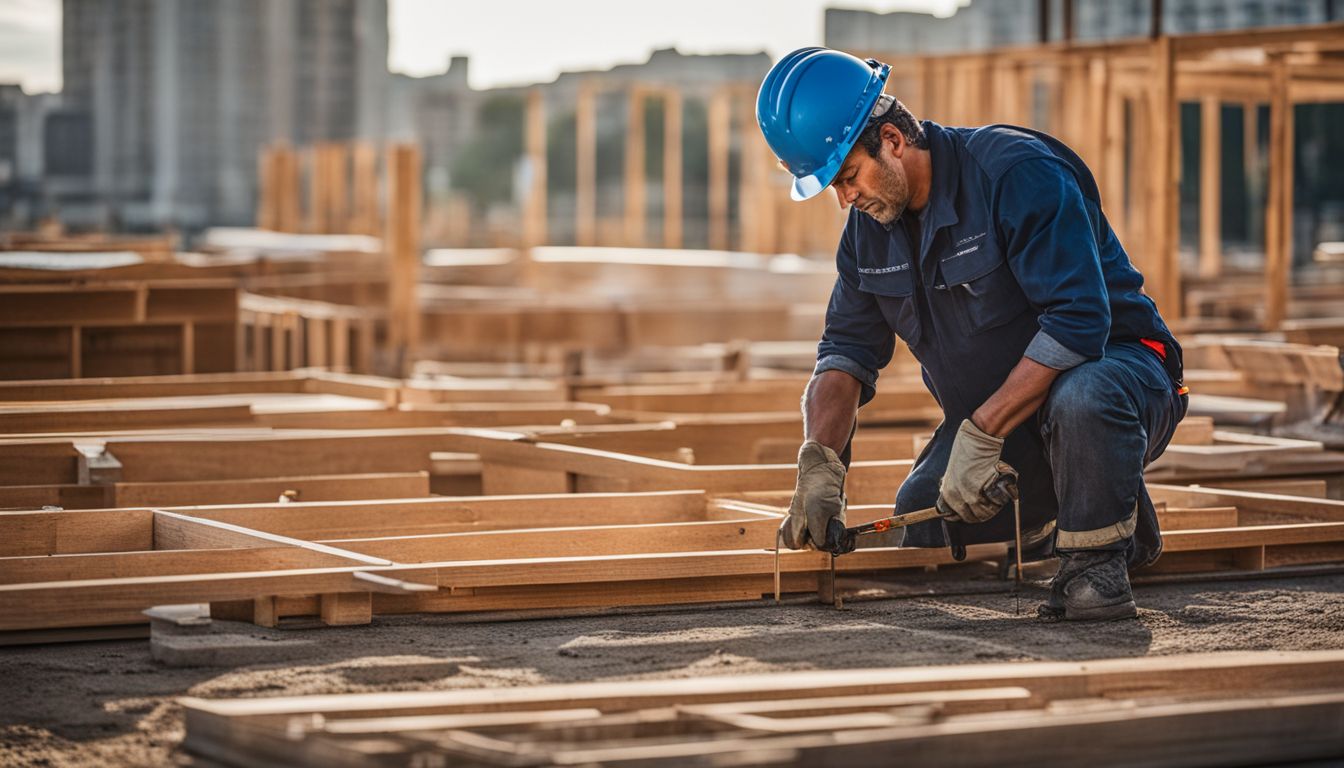
Formwork plays a crucial role in the construction process, acting as a temporary or permanent mould into which concrete is poured to shape structures once it hardens. It’s essential for creating everything from foundations to walls and floors, making it vital for both residential and commercial projects.
We use sustainable building materials and advanced scaffolding systems to ensure each structure not only meets but exceeds expectations of durability and efficiency.
Efficient building practices involve selecting the right formwork material that aligns with project needs while considering environmental impact. Whether we opt for traditional timber, steel, aluminum, or innovative materials like recycled construction materials and fabric forms, our goal remains the same: achieve durable infrastructure solutions through resource-conserving construction techniques.
This approach allows us to deliver eco-friendly construction methods that support sustainable concrete construction across various types of buildings.
Innovations in Formwork Technology
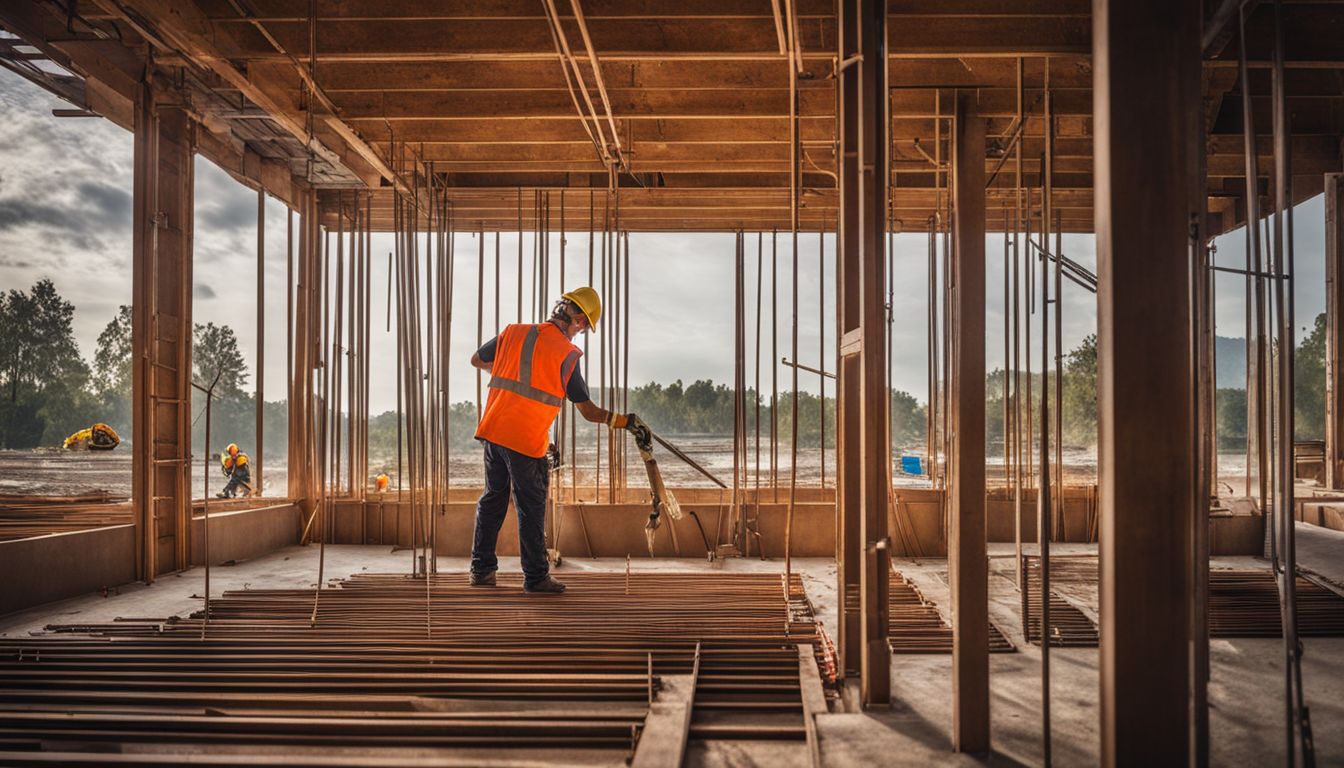
Innovations in formwork technology improve construction efficiency and sustainability. Advances in materials, reusability, and resource conservation drive the development of modern formwork systems.
Material-Saving, Reusable, Resource-Efficient
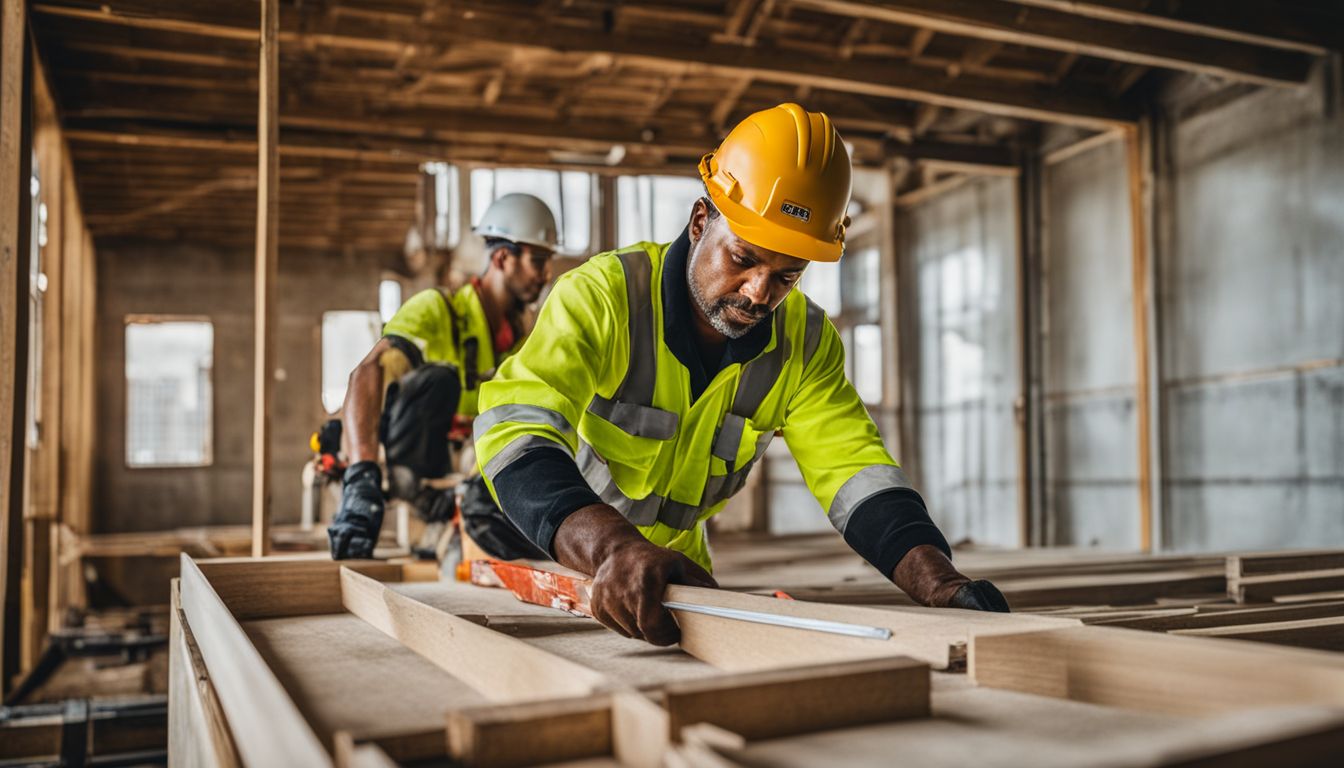
We focus on creating formwork solutions that save materials, are reusable, and increase resource efficiency. Our aim is to reduce waste and conserve resources in every construction project.
By using sustainable building materials and efficient building practices, we ensure that our formwork systems contribute positively to eco-friendly construction methods.
Our innovative designs allow for the repeated use of formwork components, significantly cutting down both costs and environmental impact. We employ advanced scaffolding systems and automation in formwork to make the process smoother and more efficient.
This approach not only supports sustainable concrete construction but also aids in creating durable infrastructure solutions that stand the test of time.
Flexibility through Modular System
Moving from the concept of material-saving, reusable, and resource-efficient approaches in formwork, we explore another innovative step—flexibility through a modular system. This method allows us to create structures that adapt easily to varying architectural designs and project demands.
By employing modular formwork systems, we enable swift adjustments on-site without sacrificing quality or durability. Our approach ensures projects stay agile, meeting the specific needs of each construction phase.
Embracing modularity in formwork enables more dynamic and efficient building processes.
Modular systems also significantly reduce waste by allowing components to be reused across different projects. This aids not just in cutting down costs but also aligns with our commitment towards sustainable building practices.
It’s about making smart choices that benefit both our clients and the environment. By focusing on innovation like this, we continue to lead in providing durable infrastructure solutions that stand the test of time while promoting eco-friendly construction methods.
Magnet Shuttering
We’ve embraced magnet shuttering, revolutionising how formwork is set up and dismantled in construction projects. This innovative system uses powerful magnets to securely hold the formwork panels in place without traditional anchoring methods.
It allows for quick adjustments and alignments, making the construction process faster and more efficient. The adaptability of magnet shuttering means it fits various shapes and sizes, facilitating complex architectural designs with precision.
By integrating magnet shuttering into our practices, we ensure resource-conserving production as there’s minimal waste compared to conventional systems. It streamlines workflow by reducing setup times considerably, thus accelerating project timelines while maintaining high-quality standards in durable infrastructure solutions.
Our next step focuses on mastering the art of formwork in residential and commercial projects, where these innovations can truly shine.
Mastering the Art of Formwork in Residential and Commercial Projects
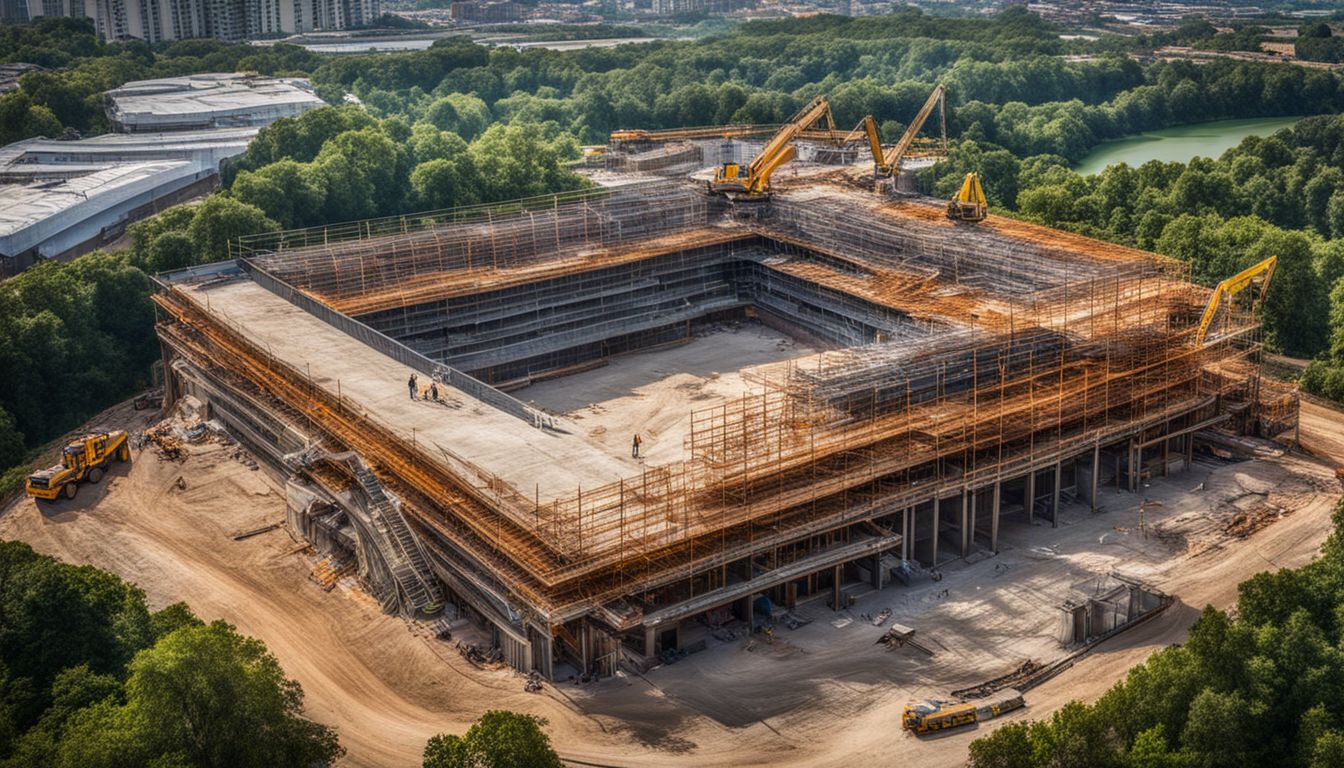
Mastering the art of formwork in both residential and commercial projects is crucial for us to deliver top-notch results. In residential constructions, our focus lies on creating durable, eco-friendly homes that stand the test of time using innovative formwork technology.
We ensure every project benefits from advanced scaffolding systems and sustainable building materials, cutting down waste without compromising quality.
For commercial projects, efficiency and safety are key. Our team applies efficient building practices through automation in formwork and resource-conserving construction techniques.
This approach not only speeds up the construction process but also ensures a high level of precision and reliability in every structure we build. Through embracing innovative building designs and modern construction techniques, we set new standards in durable infrastructure solutions for business owners looking to invest in future-proof properties.
Focus on Reusability in Formwork
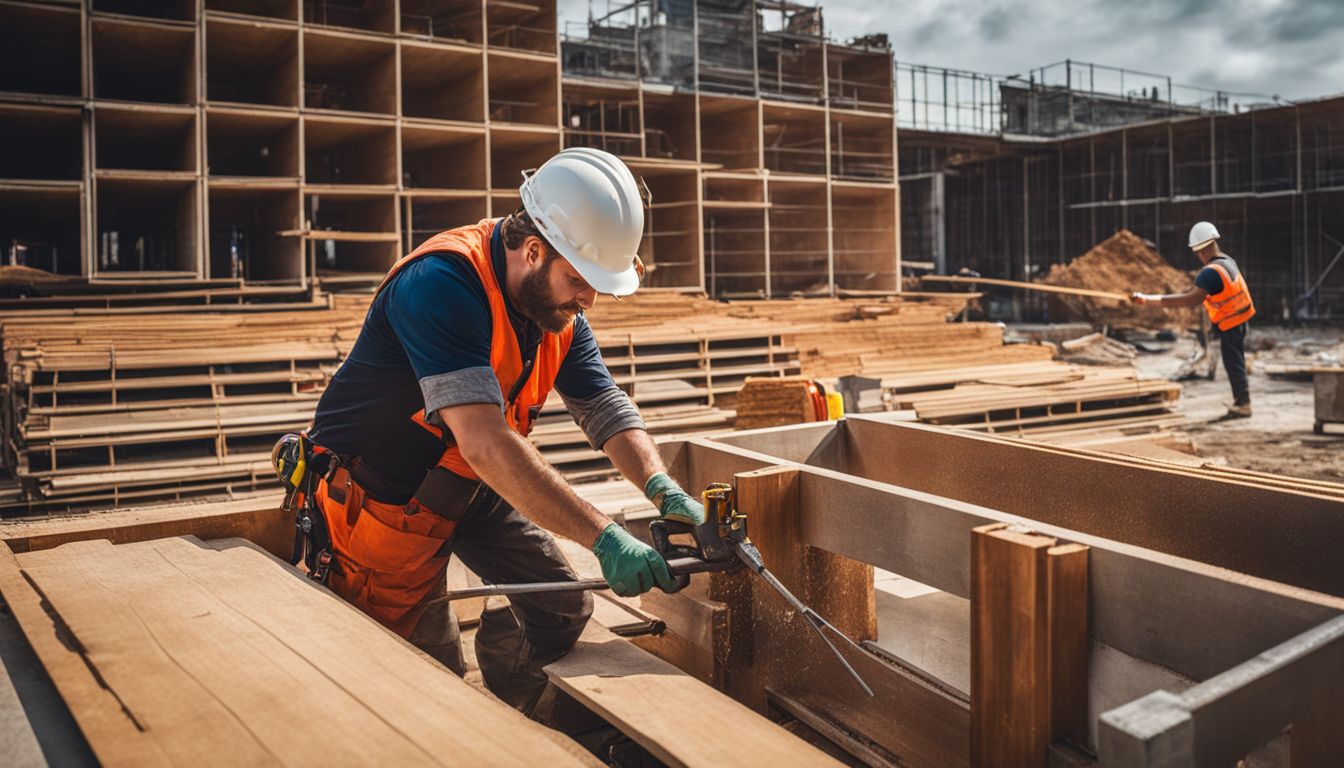
When it comes to formwork, reusability plays a crucial role. It’s not merely about savings on time and material; it’s designed to enhance efficiency and sustainability in every project.
Savings on Time and Material
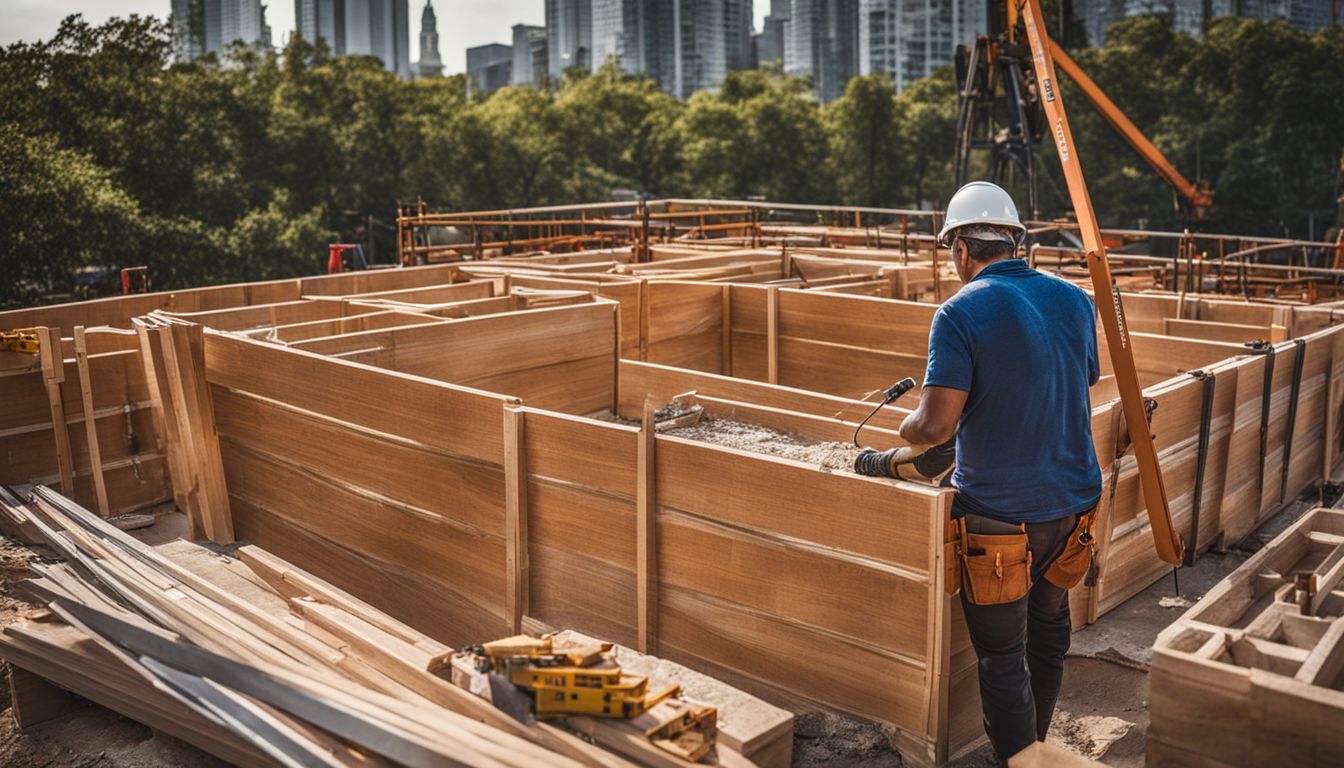
We understand the importance of reducing costs and increasing efficiency in construction projects. Innovations in formwork technology help us achieve just that by saving on both time and materials.
Reusable formwork systems, for instance, drastically cut down on the need to purchase new materials for each project, leading to significant cost savings and a reduced environmental impact.
By adopting advanced formwork solutions like modular and magnet shuttering systems, we speed up the construction process without compromising on quality or safety. These systems are not only quicker to assemble but also require less labour, helping us complete projects faster and more economically while contributing to sustainable building practices.
Latest Trends in Formwork Technology for 2022
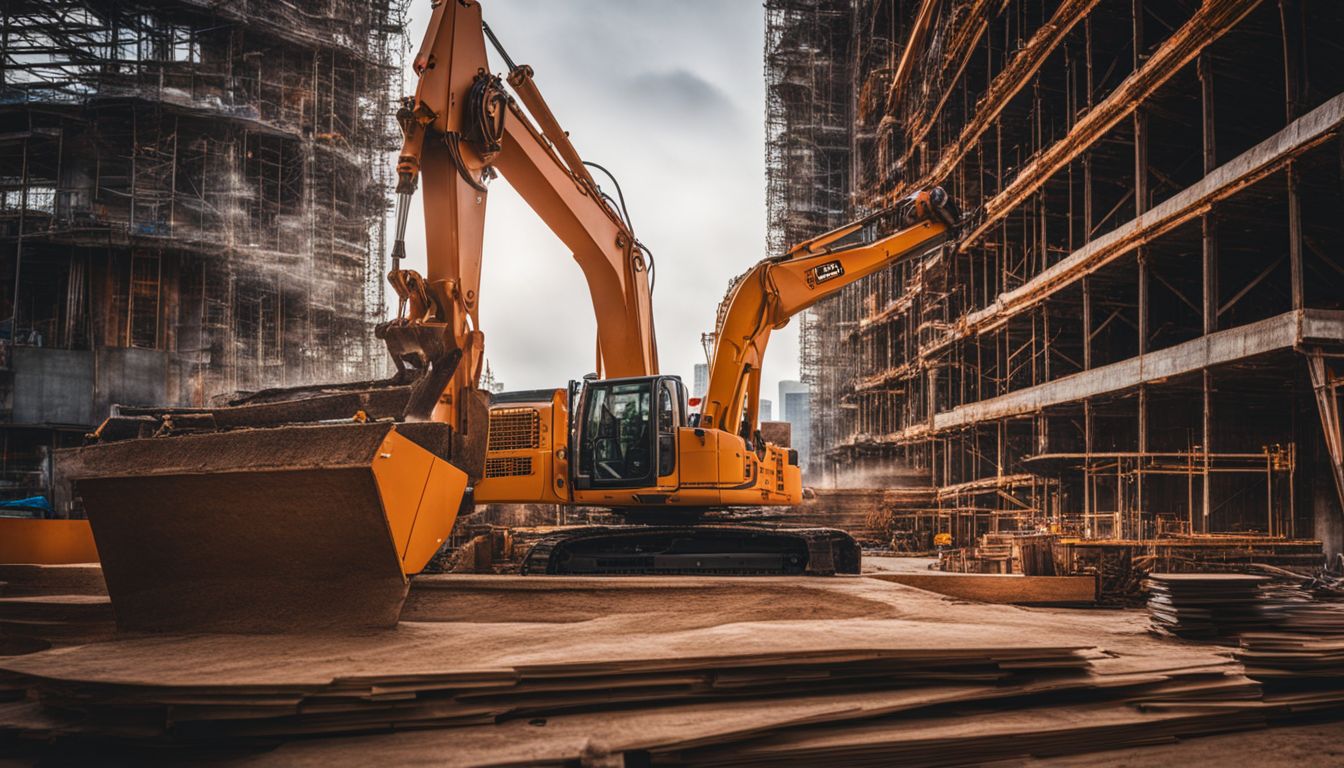
In 2022, innovative formwork technology is making strides with advanced features and materials. Embrace the future of construction by exploring the latest trends in formwork technology.
Insulating Concrete Forms
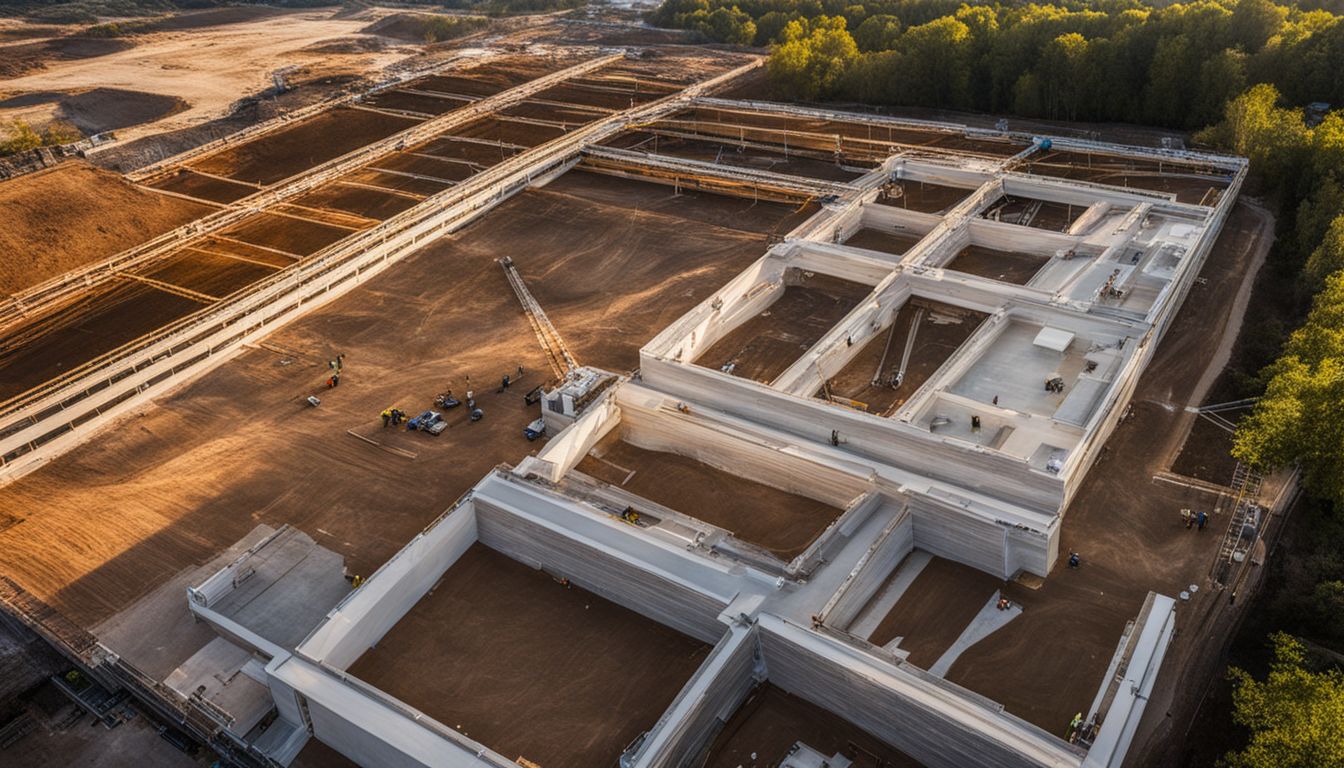
Insulating Concrete Forms (ICFs) are revolutionising sustainable building methods by offering energy-efficient and durable construction solutions. These forms consist of hollow blocks or panels made of expanded polystyrene foam, stacked to shape the walls of a building, and then filled with reinforced concrete.
They provide excellent insulation, reducing heating and cooling costs significantly for both residential and commercial buildings.
Using ICFs promotes quicker construction times, reduces waste, and enhances the structural integrity of buildings against natural disasters like earthquakes. By choosing ICFs, we contribute to eco-friendly construction approaches that prioritise resource-conserving production and efficient building practices.
Innovation in formwork is paving the way for more sustainable futures.
Moving on from Insulating Concrete Forms introduces us to another innovative method: Wall Forms.
Wall Forms
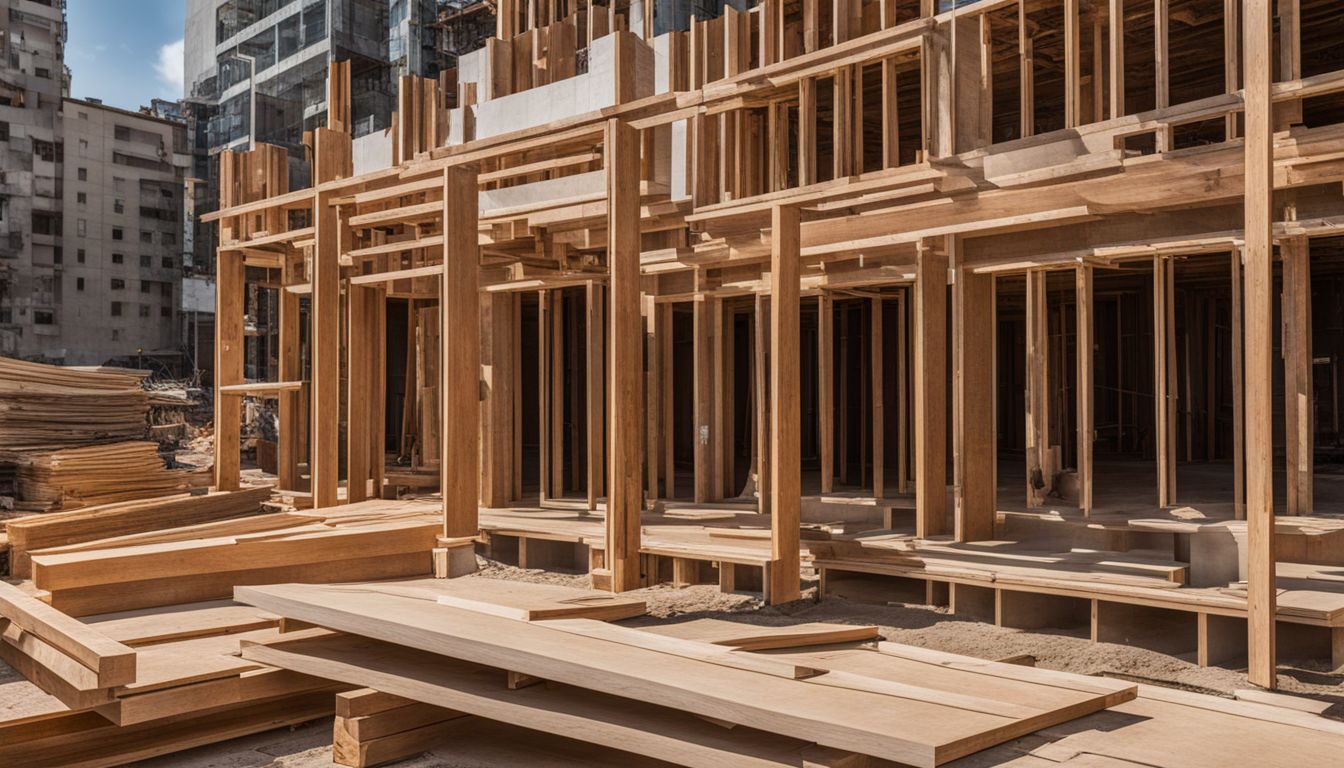
Wall forms play a crucial role in creating the structure of concrete walls, offering stability and precision. These forms are designed to enhance durability, sustainability, and efficiency in construction projects.
By incorporating advanced materials like fiberglass or aluminum panels, wall forms contribute to sustainable building practices and resource-conserving construction. The use of modern wall forms aligns with the trend towards eco-friendly construction methods and the adoption of innovative building designs to create durable infrastructure solutions.
With these cutting-edge construction methods, businesses can achieve earthquake-resistant structures while homeowners benefit from robust and long-lasting residential buildings.
Innovative wall forms also support efficient building techniques by providing a seamless framework for pouring concrete and ensuring precise dimensions for each section of the wall.
Tunnel Forms
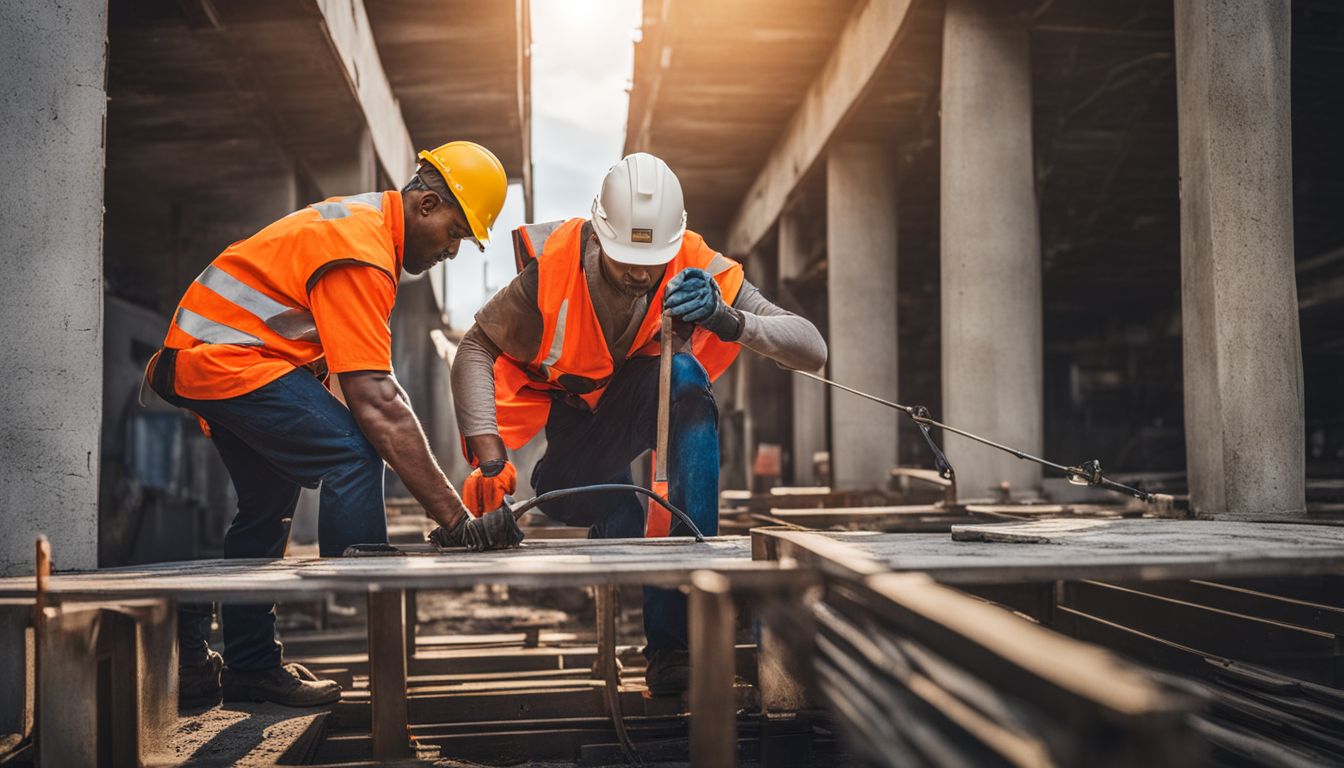
Tunnel forms are advanced construction moulds used to create continuous concrete walls and slabs. These forms offer a faster, more efficient way of building structures such as residential and commercial buildings.
The tunnel forms system allows for simultaneous work on different parts of the structure, maximising time and resource efficiency while ensuring durable, earthquake-resistant structures.
This innovative formwork technology integrates seamlessly with sustainable construction practices, using recycled materials and conserving resources.
Looking ahead, the latest trends in formwork technology for 2022 point towards embracing tunnel forms as an integral aspect of modern construction techniques that emphasise durability and efficiency.
Modular Forms
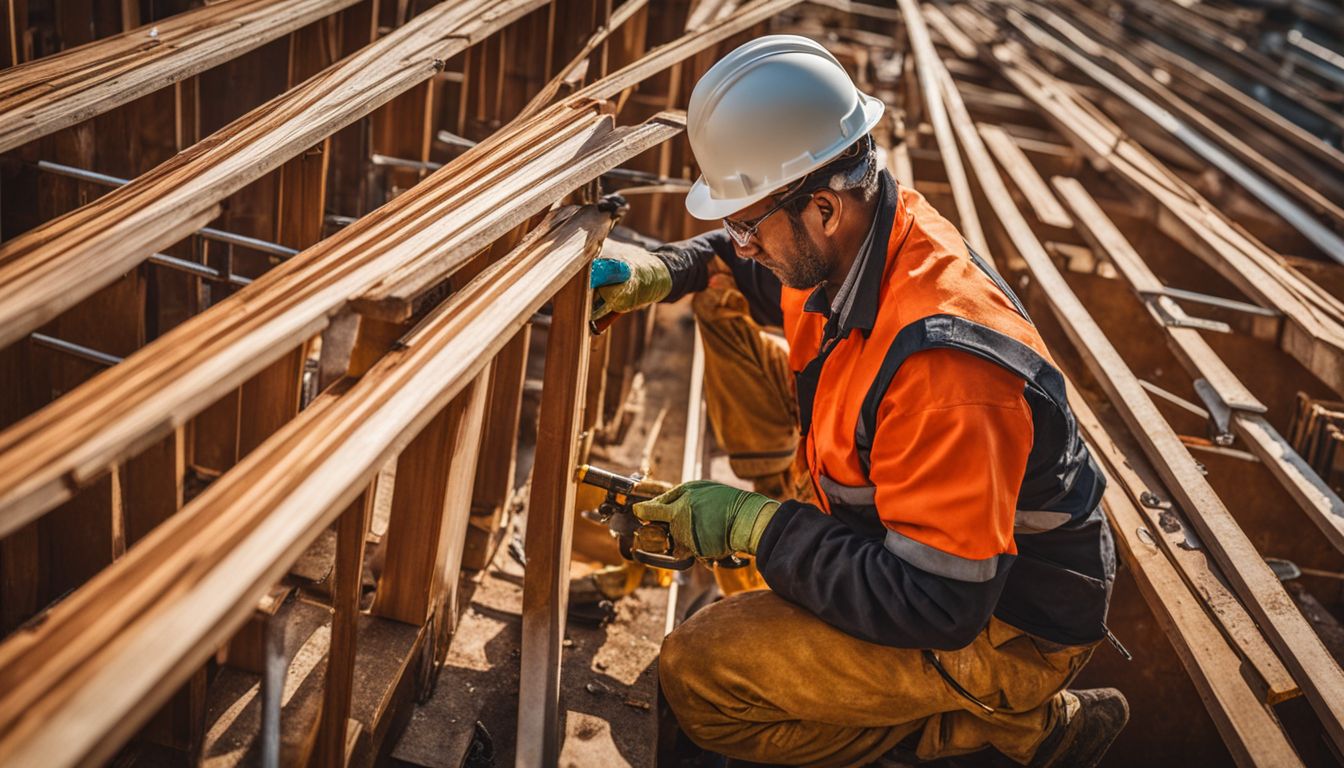
Moving from the discussion of tunnel forms, let’s now delve into the realm of modular forms. These innovative formwork systems are designed to enhance construction efficiency and sustainability.
By using interlocking panels or components, modular forms enable tailored formwork solutions for various project requirements.
Modular forms offer business owners and homeowners sustainable building methods, advanced construction materials, efficient building practices, and resource-conserving production. It is advisable for those seeking more than just conventional formwork techniques to consider implementing these modern and versatile systems in their upcoming residential or commercial projects.
Perfect Aluminum Panels
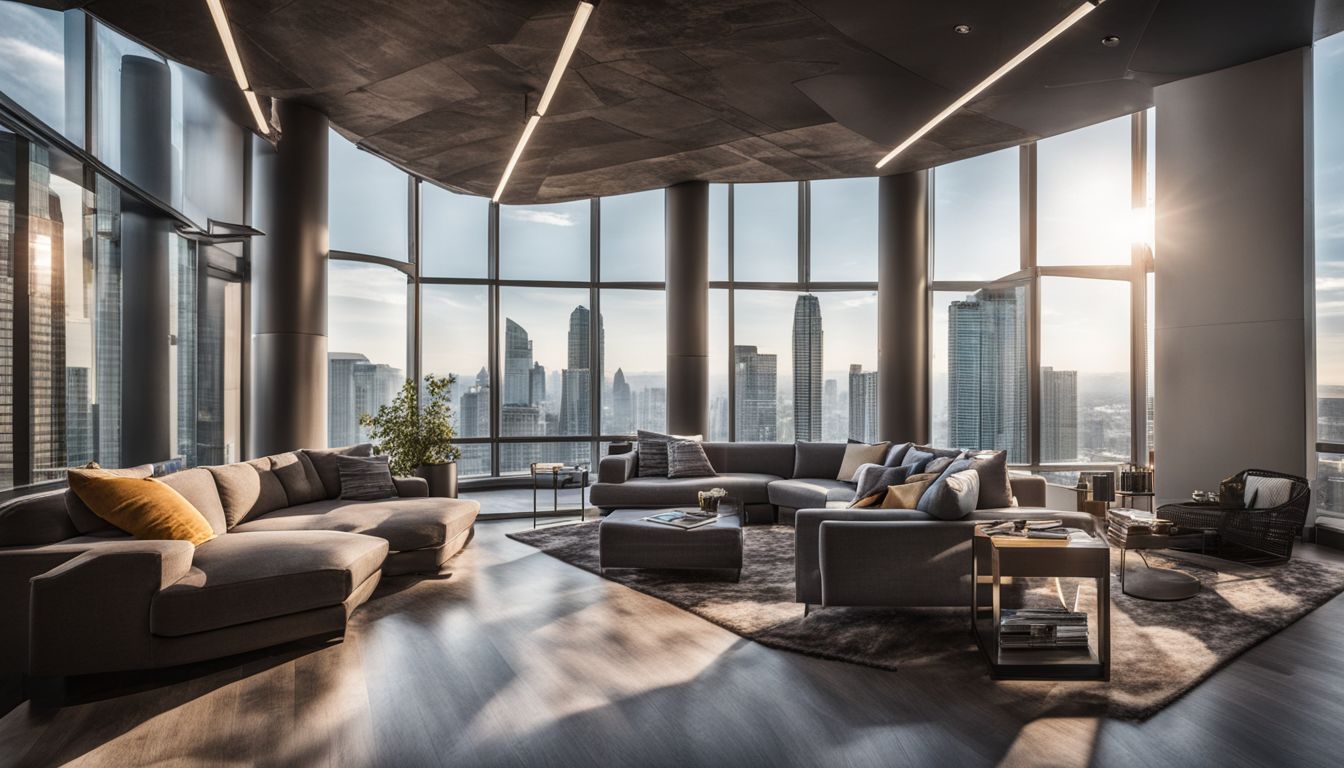
Perfect Aluminum Panels offer unmatched strength and durability while being lightweight, making them an ideal choice for both residential and commercial construction projects. Their corrosion-resistant nature ensures longevity, reducing the need for frequent replacements and maintenance.
These panels are also eco-friendly, as they can be recycled at the end of their lifecycle, contributing to sustainable building practices.
The use of Perfect Aluminum Panels enhances construction efficiency and accelerates project timelines due to their ease of handling and installation. The high precision engineering of these panels provides a seamless finish, meeting the demand for modern and innovative building designs.
Fiberglass Forms
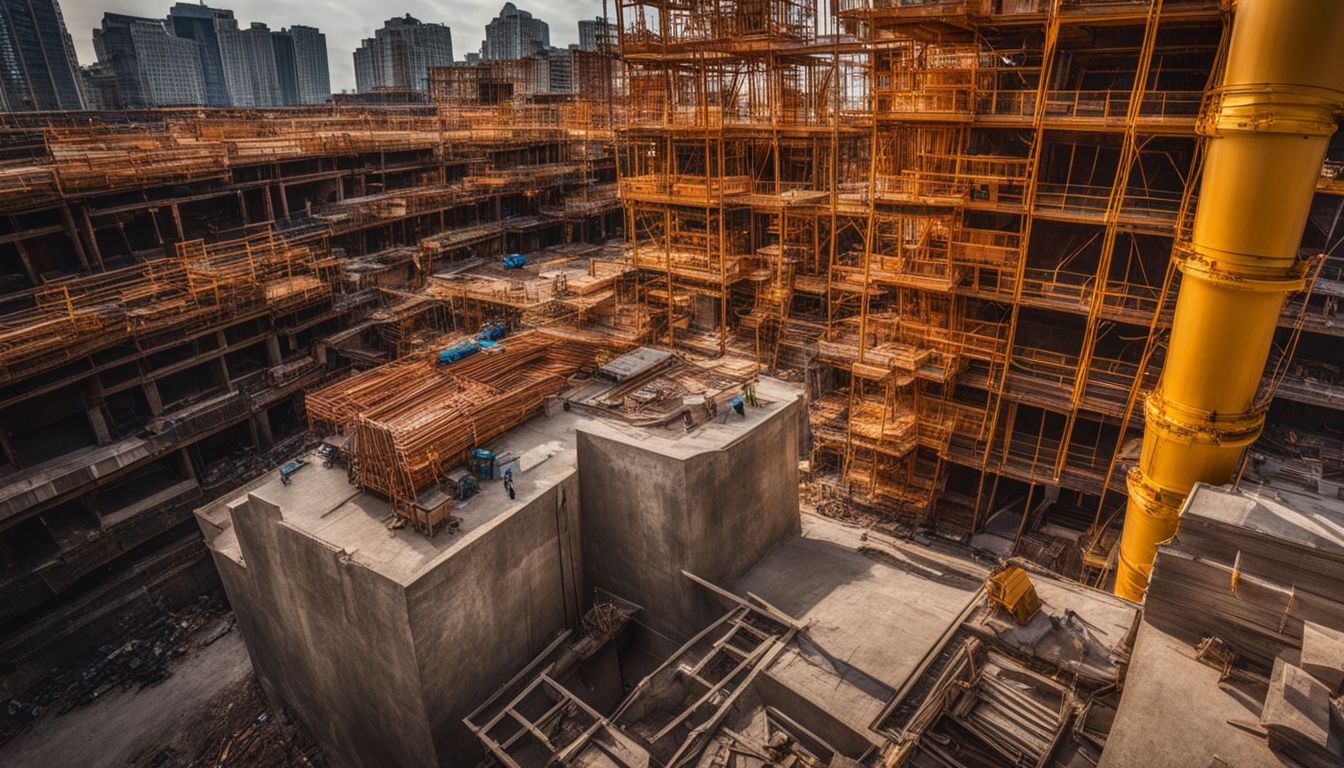
Fiberglass forms offer a lightweight and durable solution for formwork needs, making them ideal for both residential and commercial projects. The use of fiberglass in formwork construction ensures sustainability through the reduction of material waste and energy consumption.
These innovative forms also provide excellent insulation properties, contributing to more energy-efficient structures. Moreover, their smooth surface finish requires minimal maintenance and makes cleaning easier, adding to the overall efficiency of the construction process.
The strength and versatility of fiberglass forms make them an attractive option for modern construction projects. With their ability to withstand harsh weather conditions and resist corrosion, these forms are well-suited for long-term use in various building applications.
Fiberglass forms not only enhance the durability of structures but also contribute to sustainable building practices with their eco-friendly composition.
Fabric Forms
Fabric forms are an innovative approach to formwork that utilise fabric-based materials instead of traditional rigid formwork. These forms offer lightweight, flexible, and cost-effective solutions for various construction needs.
The use of fabric forms also aligns with sustainable building methods, as they often employ recycled or eco-friendly materials. Fabric forms can be tailored to fit unique design requirements, making them ideal for businessowners and homeowners looking for efficient and modern construction techniques.
This advanced formwork method offers the potential for creating durable infrastructure solutions while embracing sustainability and innovation in construction practices. By incorporating fabric forms into construction projects, businesses and homeowners can benefit from resource-conserving production and environmentally friendly construction methods that contribute to resilient and efficient building structures.
Benefits of Using the Latest Formwork Technology
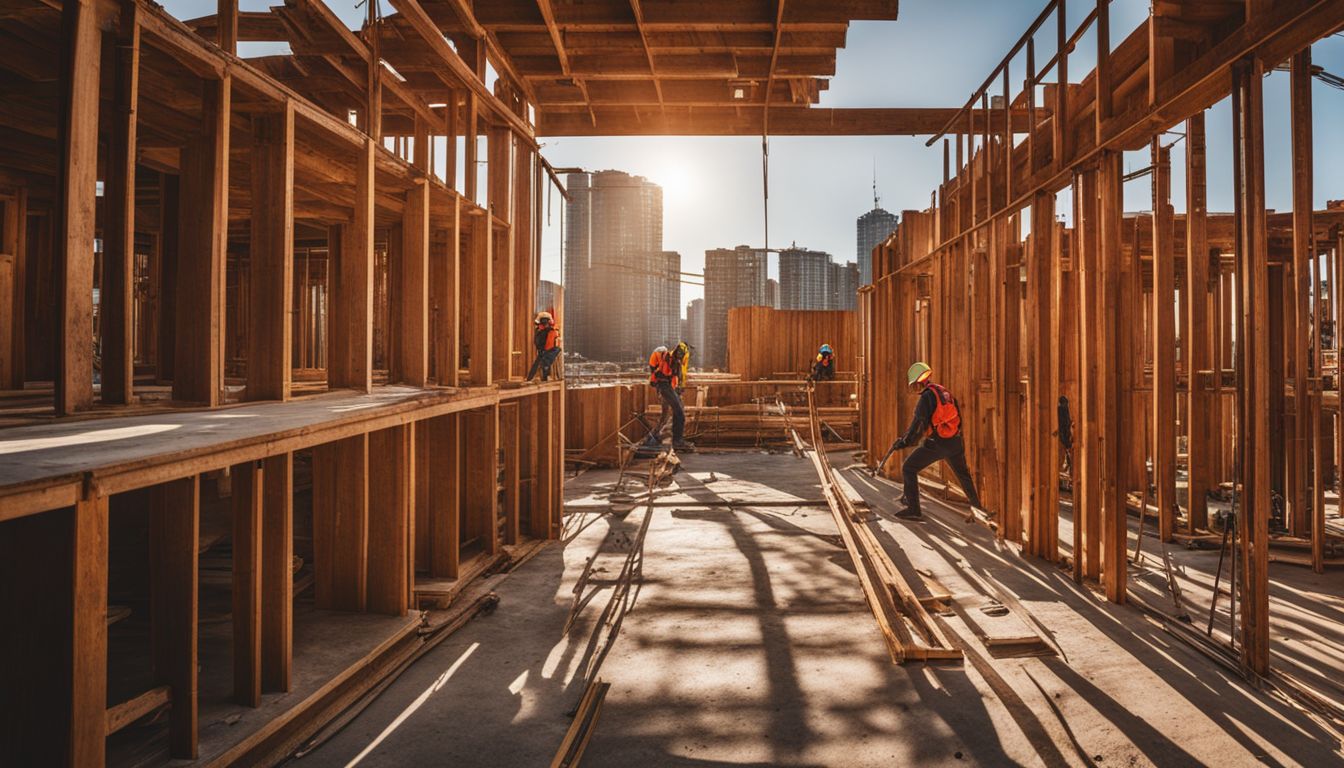
The latest formwork technology offers numerous benefits for construction projects. It enhances efficiency and sustainability, leading to cost savings and reduced environmental impact.
By using advanced formwork materials and systems, construction projects can achieve durable and earthquake-resistant structures while conserving resources. Furthermore, the use of modern formwork technology allows for more efficient building practices, helping homeowners and business owners alike to create durable infrastructure solutions with innovative building designs.
Moving on to ‘8. Advances in Formwork Automation’….
Advances in Formwork Automation
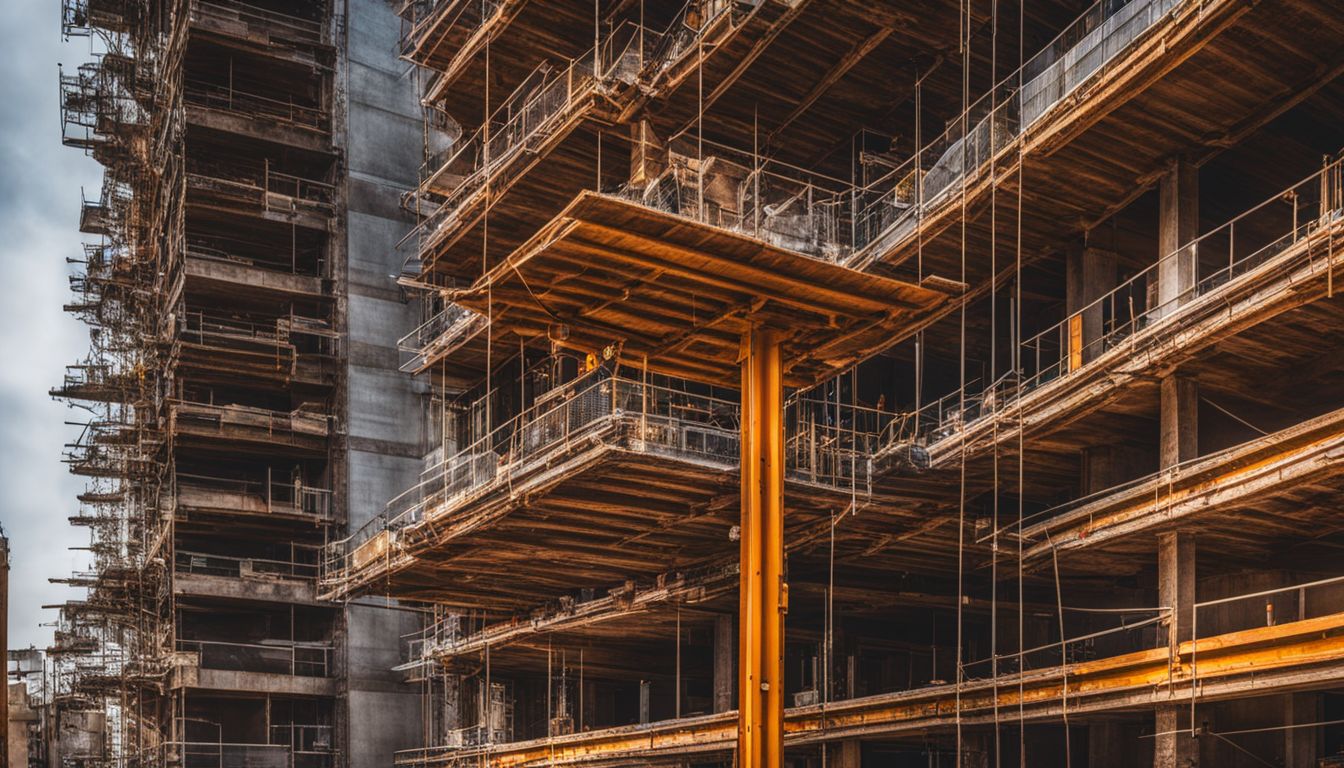
Advances in formwork automation have revolutionised construction processes, enhancing efficiency and precision. To uncover the exciting possibilities of modern formwork technology, read more here.
Structure and Materials in Concrete Construction
Concrete construction relies on the use of sturdy materials and precise structures to ensure long-lasting and durable buildings. The composition of concrete involves carefully selected materials such as cement, water, aggregates, and sometimes additives or reinforcements.
These ingredients work together to form a strong and resilient material that can withstand various environmental factors and support the weight of entire structures. The strength of concrete is further enhanced through structural design, ensuring that it can bear loads effectively while maintaining its stability over time.
This synergy between robust materials and well-planned structures results in reliable constructions that stand the test of time.
Innovative advancements in formwork technology have allowed for more efficient construction processes using sustainable building materials. By leveraging cutting-edge techniques and modern construction methods, businesses are able to create durable infrastructure solutions with minimal impact on the environment.
The Future of Formwork: Embracing Innovation
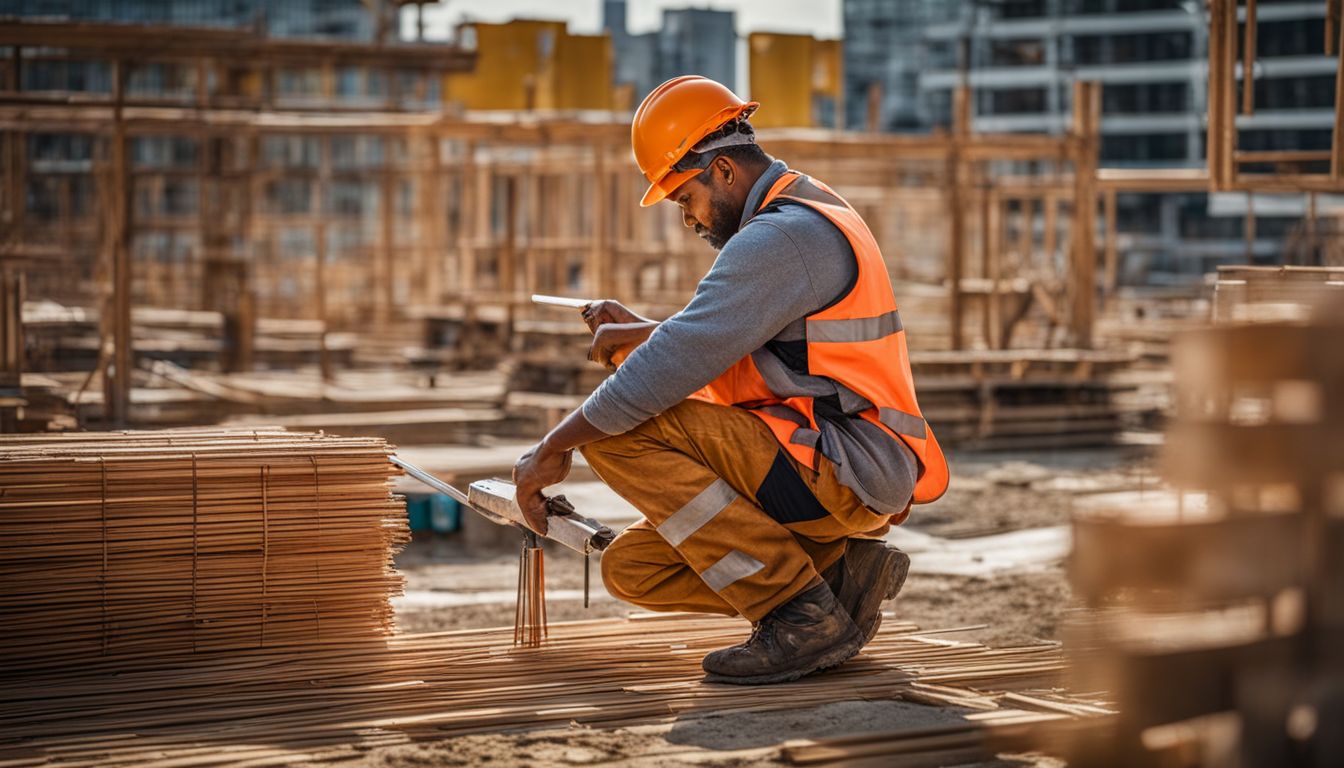
Formwork technology is advancing rapidly, paving the way for more efficient and sustainable construction practices. The future of formwork lies in embracing innovation, with an emphasis on sustainable building materials and advanced scaffolding systems.
As businessowners and homeowners, it’s crucial to recognise the significance of these advancements in creating durable infrastructure solutions that are earthquake-resistant and environmentally friendly.
In this ever-evolving realm of construction innovation, the use of recycled construction materials, resource-conserving production, and automation in formwork are underpinning the future of construction.
Advanced construction materials like insulated concrete forms and fibreglass forms tailored towards eco-friendly construction methods are designed to enhance not only the efficiency but also the durability of buildings.
Sustainable formwork materials play a pivotal role in navigating complexities within modern building designs, seeking more than just traditional concrete structures. It’s advisable for both builders and property owners to keep abreast with these innovations as they unlock the secrets to robust, enduring structures.
Moving forward from “9. The Future of Formwork: Embracing Innovation,” let’s delve into how these advanced techniques will shape sustainable infrastructure solutions for residential and commercial projects alike.
Conclusion
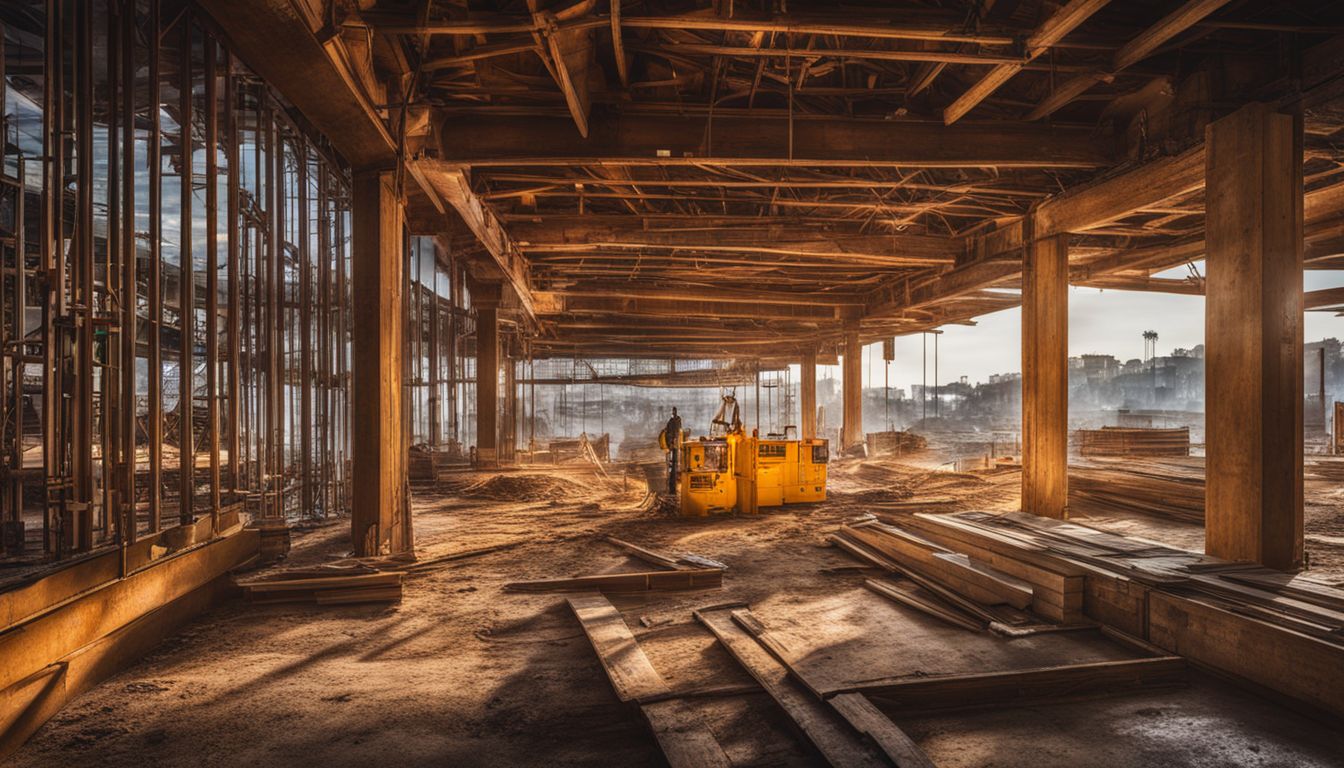
In conclusion, the ongoing advancements in formwork technology cater to the increasing demand for sustainable and efficient construction methods. We’ve explored innovations such as material-saving systems, modular designs, and magnet shuttering that promote resource efficiency.
These strategies are not only practical but also hold the potential to drastically improve construction processes. By embracing these innovative approaches, businesses and homeowners can expect cost savings, improved structural integrity, and a reduced environmental impact in construction projects.
As you explore implementing these cutting-edge techniques in your projects, consider seeking further insights from industry experts to stay ahead of the curve.
